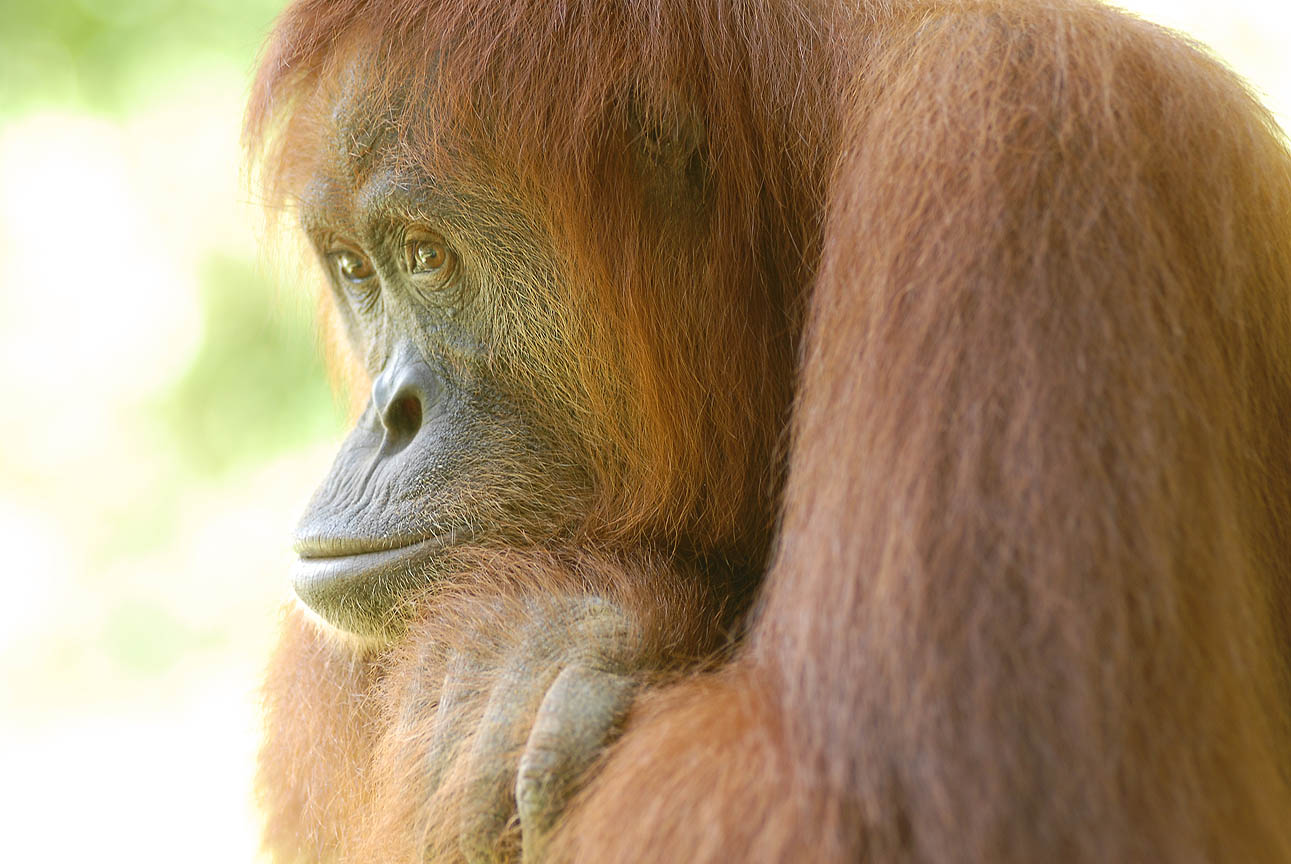
Orangutans need vast, connected forests to find sufficient food and maintain genetic diversity. However, forest loss and fragmentation are shrinking their habitat, forcing them into closer proximity with human agricultural lands.
Farmlands, energy infrastructure, roads and other barriers which are essential for forest-edge communities to thrive, can lead to orangutans being trapped in smaller, isolated pockets of forest. This pushes them into cultivated areas, including fields and home gardens, and huge oil palm plantations. Whether the orangutans are seeking passage to new areas of forest, or simply trying to find food, this encroachment inevitably leads to human-orangutan conflict.
Almost all orangutan habitat overlaps with community lands that have been cultivated and managed for centuries, if not millennia. We must develop a solution that benefits both people and wildlife.
Globally, forest-edge communities face economic hardship, forcing them to prioritise their own needs and survival over conservation efforts. This creates an impossible situation when orangutans – seeking food and resources due to forest loss – raid agricultural lands. The resulting crop and income losses can be huge for local communities, especially for smallholders. For some, a single raid can devastate their livelihoods. Farmers may resort to harmful measures such as shooting or capturing orangutans, which exacerbates the conflict and further isolates orangutan populations.

When community interests clash with conservation activities, these programmes are unlikely to succeed. However, when we can find solutions to benefit both people and wildlife, communities can be highly effective and efficient in protecting biodiversity and ecosystems. In orangutan landscapes, ensuring local communities directly benefit from conservation is not just the most reliable approach, it’s often the only realistic one.
Engaging with communities requires a deep understanding of their situation, their culture and their relationship with land and biodiversity. We work with environmental anthropologists to understand social dynamics and attitudes towards biodiversity. In a way, anthropology is the bridge between conservation agencies and local communities. This is the first step in gaining the genuine participation of forest-edge communities, and in developing culturally-sensitive and appropriate solutions.
We collaborate with our frontline partners to train farmers in wildlife-friendly crop protection, such as bamboo noise cannons to scare away orangutans, and avoiding planting crops near the forest border. We are also exploring insurance and compensation schemes to encourage cultivation of crops that orangutans do not eat.

The decision to translocate an orangutan is never taken lightly, and so this should only ever be a last resort if there is immediate risk to an orangutan. Since 2012, the Human Orangutan Conflict Response Unit (HOCRU) – which is managed by our frontline partners OIC – has been responding to calls from forest-edge communities to mitigate human-orangutan conflict.
HOCRU is just one element of OIC’s broad conservation strategy. The team tackles the root causes of human-orangutan conflict, providing training so that communities can protect their crops without harming wildlife. OIC also works to rewild degraded forests and develop sustainable livelihoods.
Brahim is a smallholder who worked with OIC on a training programme: “For me, orangutans were pests. When they come into my durian plantation, the result can be catastrophic for me and my family. But HOCRU team introduced us to conflict mitigation technics. And if these were to fail, we know they are here to help us. No, killing orangutans is not the solution, we have ways to live together in harmony”.
You can help protect Sumatra's Orangutans. Click to get updates
